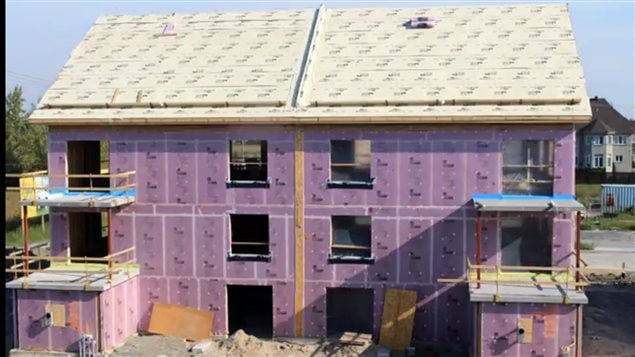In housing, the “net-zero” concept means a house that produces as much energy itself as it consumes.
This is not an entirely new concept, but such rare buildings have always been custom made.
BuildABILITY Corporation is a housing industry consulting firm which seeks to bring innovation and new technologies to the construction industry.
In collaboration with Natural Resources Canada, and the firm Owens-Corning, they’ve initiated a challenge for affordable net zero housing.
Candice Luck is a director of BuildABILITY in the strategy and programmes department
Listen
The challenge is two-fold: first- to build net-zero housing in Canada where temperatures in the southern half of the country can be up to 30 degrees C in summer and -30C in winter, and second- the more challenging part- to make it affordable, and perhaps eventually the new standard in the construction industry.
Building codes across Canada vary, and are a provincial responsibility. There are minimum construction standards, ratings and materials that can be used. In the 1970’s when the first energy crisis hit, the government proposed a new voluntary energy standard for insulation called R-2000, this is a technical performance standard for energy efficiency, indoor air tightness quality, and environmental responsibility in home construction, and is widely practiced now.
Energy Star is a new level of performance often rating household appliances, but also now applied to homes.
Net Zero, is the idea of taking these concepts to the highest level such that a home is so efficient that solar panels supply enough energy to completely offset typical household use.

The idea is that typical energy usage of a family of two adults and one child over the course of a year in this super efficient house- heating and appliance use – augmented by power company supply, will be counter balanced by electricity produced by solar panels out such that at the end of the year, the power bill would be zero.
The challenge is being met by five building companies in four provinces building a variety of housing, from single family dwellings, to four townhouses, to a six-plex condo.
In addition to energy cost savings for the home-owner, there is an environmental advantage, as housing contributes about 15 percent to greenhouse gas emissions, and building far more efficient houses will reduce that figure considerably.
Reid Heritage Homes construction (RHH) Net Zero
The hope is that this project will develop affordable energy efficient techniques for constructors for wider adoption in the industry, while also demonstrating the net-zero building is affordable.
While the first houses have been completed, all projects are expected to be complete, and available for purchase early in 2016.
additional information-sources







For reasons beyond our control, and for an undetermined period of time, our comment section is now closed. However, our social networks remain open to your contributions.